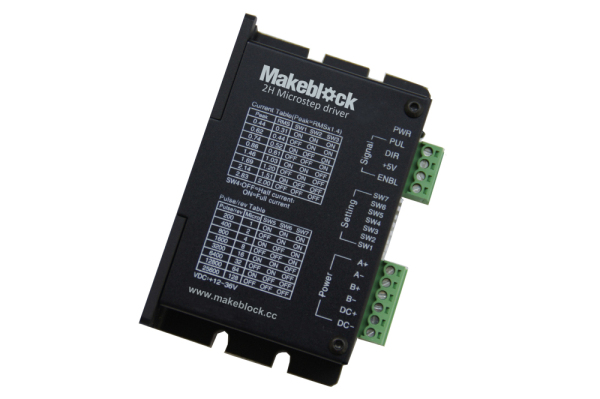Our previous version of stepper motor driver seems too big and the use of it is difficult for the beginner.

On the market, there are several easy use and mini stepper motor driver, such as the Easy Driver Stepper Motor Driver, Big Easy Driver and the A4988 Stepper Motor Driver Carrier. But the uses of these drivers are still not easy enough. You should write a lot of control codes by yourself and the wiring is not eary enough.
Recently, we have designed an easier stepper motor driver Me-Stepper Driver by using Allegro’s A4988 DMOS Microstepping Driver and adding an Arduino Nano on board at the same time. So Me Stepper Driver = Big Easy Driver + Arduino Nano.

Let’s see more details about Me-Stepper Driver.
By using the A4988, Me-Stepper Driver can drive up to 2A per phase of bi-polar steppermotor. It is a chopper microstepping driver which defaults to 16 step microstepping mode. You set microstepping resolution to full, half, quarter, eighth and sixteenth steps in the program. The motor driver voltage is from 9V to 35V, and includes on-board 5V/3.3V regulation, so you can directly connect it to Me-Base Shield on Port1 or Port2 without any other power supply. We also reserved a power supply connector on the board; you can also use an extra power supply for it. The connecting is easy as following picture shows and the driver is compatible with 4 and 6 wire stepper motors of any voltage.

The on board Arduino Nano has become the main controller of the stepper motor. Users can use an Arduino board to control the on board Arduino Nano by I2C communication protocol. We also provide an Arduino library that contains different kinds of control interfaces including an accelerate and decelerate algorithm. Programming and controlling may be easier now. Wring is easy, just connect the board to Me-Base Shield on Port 1 or Port2 and connect the stepper motor to the 4 pin connector on board. Then you can control the stepper motor easily by sending the control command from the Arduino board under Me-Base Shield.

You can set the maximum current output with a potentiometer, which lets you use voltages above your stepper motor’s rated voltage to achieve higher step rate.
Also we haver a heatsink on board.

We have finished the design and test of Me-Stepper Driver. We decided to change the potentiometer on board to a digital one, so that you can set the maximum current output just in the program. Is it necessary to make this change? If there are any questions or suggestions about this stepper driver, just post here…

